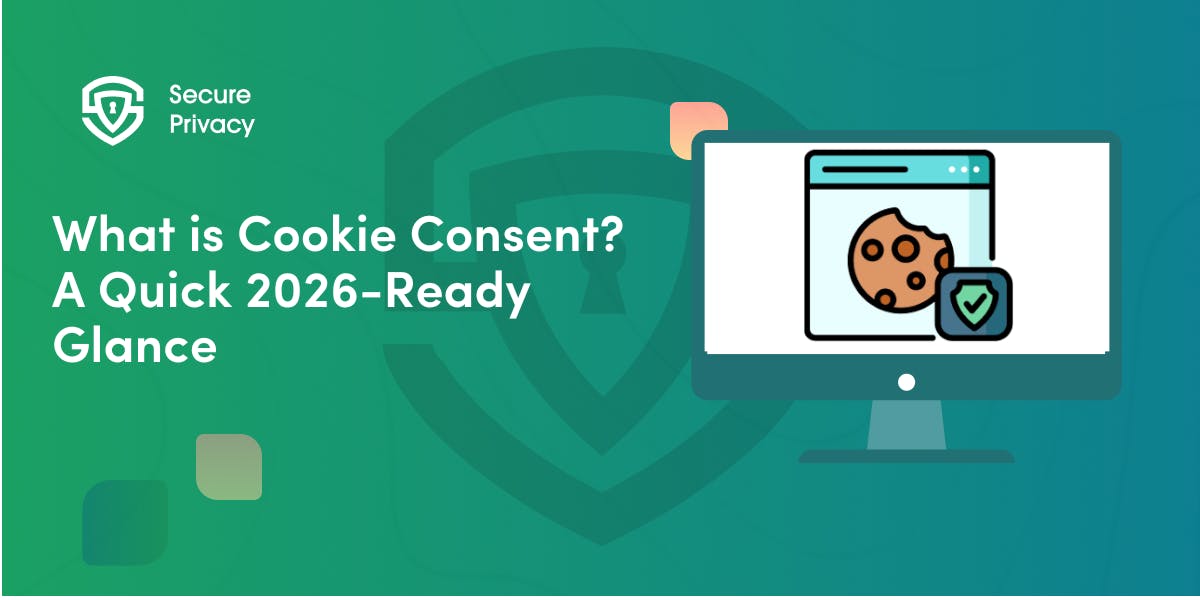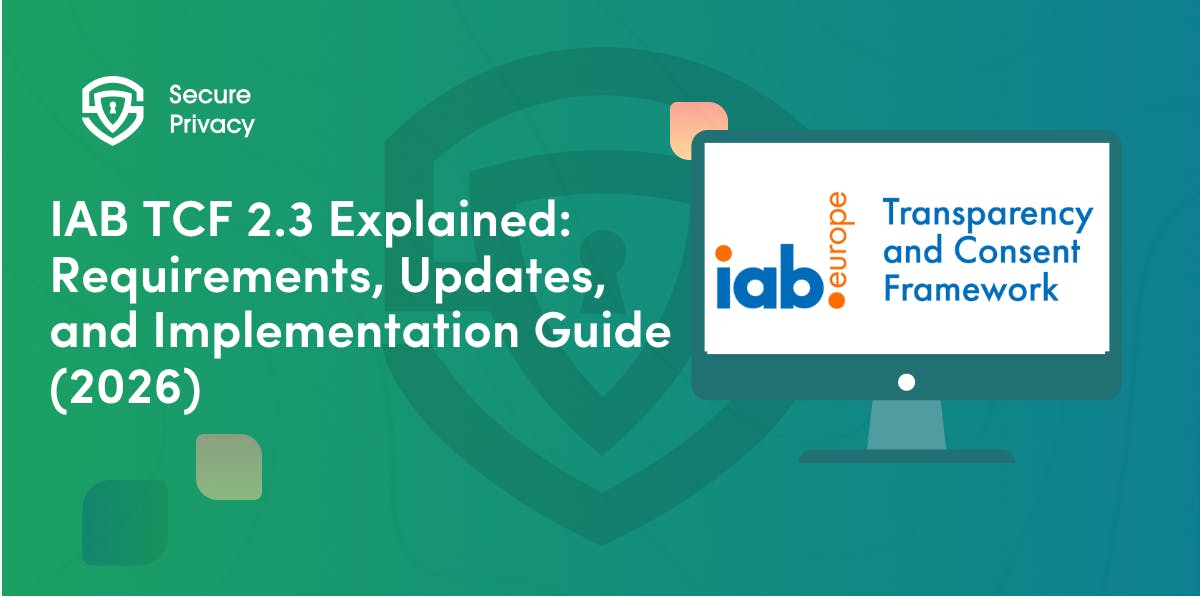Beyond the Checkbox: How Dynamic Consent Puts Citizens Back in Control of Smart City Data
Your face unlocks the subway turnstile. Sensors track your car through traffic. Your smartphone pings nearby beacons as you walk downtown. In today's smart cities, you generate valuable data with every step—often without realizing who's collecting it or how it's used.
The standard "I Agree" checkbox fails spectacularly in this environment. How can you meaningfully consent to data collection that happens across hundreds of urban systems, changes constantly, and involves purposes that weren't even conceived when you first clicked "accept"?
Dynamic consent offers a potential solution by transforming one-time agreements into ongoing relationships between citizens and city data systems. Unlike traditional models, dynamic consent gives you continuous control over how your information is used, with the ability to modify permissions as circumstances change.
Why Traditional Consent Fails in Smart Cities
The conventional consent model—"check here to agree to our terms"—breaks down completely in complex urban environments for several key reasons:
The Unknowable Future Problem
Smart city infrastructures evolve rapidly, with new applications and data uses emerging regularly. When you consent to traffic monitoring today, it's impossible to anticipate how that same data might be applied five years from now. Traditional consent models force an impossible choice: either provide blanket permission for unknown future uses or reject beneficial services entirely.
The Fragmentation Challenge
A modern city might deploy hundreds of separate data collection systems operated by different departments, contractors, and public-private partnerships. Each typically requires its own separate consent, creating an impossible maze for citizens to navigate. When transportation, public safety, environmental monitoring, and public health systems all collect data independently, managing consent becomes overwhelmingly complex.
The Transparency Gap
Most citizens have little visibility into what happens to their data after collection. Which third parties receive it? How long is it retained? Has its use expanded beyond the original purpose? Without ongoing communication, people can't make informed decisions about continued participation.
How Dynamic Consent Changes the Relationship
Dynamic consent fundamentally reshapes the relationship between citizens and urban data systems by creating continuous two-way communication rather than one-time agreements.
Core Elements of the Dynamic Approach
The dynamic consent framework consists of several interconnected elements:
- Revocable permissions: The ability to withdraw consent for specific data uses at any time
- Granular control: Options to approve some uses while denying others, rather than all-or-nothing choices
- Ongoing communication: Regular updates about how data is being used and new proposed applications
- Modified permissions: The ability to change consent choices as new information emerges or personal preferences evolve
- Digital interfaces: User-friendly dashboards or apps that make managing consent practical and accessible
This approach transforms consent from a static legal formality into an interactive process that respects citizen autonomy while enabling beneficial data use.
Real-World Applications in Urban Settings
Dynamic consent could transform how numerous smart city systems operate:
Traffic Monitoring: Rather than blanket permission for all traffic cameras, citizens could consent to anonymized movement tracking for congestion management but decline identification for law enforcement purposes—with the ability to modify these choices during emergencies or as policies change.
Public Health Surveillance: During disease outbreaks, citizens might temporarily elevate their data sharing permissions for contact tracing or syndromic surveillance, then revoke those permissions when the crisis passes.
Environmental Sensors: Residents could opt into sharing home energy usage data for climate initiatives while maintaining control over which specific programs can access their information and for how long.
The Technology Behind Continuous Consent
Implementing dynamic consent requires sophisticated technical infrastructure designed for both security and usability.
Digital Platforms for Citizen Control
The foundation of dynamic consent is typically a centralized digital platform that serves as the citizen's dashboard for managing permissions across multiple urban systems. These platforms must:
- Provide intuitive interfaces accessible to users with varying levels of technical proficiency
- Track consent preferences at a granular level across disparate city systems
- Authenticate users securely while maintaining privacy
- Communicate changes and requests in clear, non-technical language
- Function across multiple devices and access points
The technical challenge lies in creating systems simple enough for widespread adoption while maintaining the sophistication needed for fine-grained consent management.
Integration Challenges
Perhaps the most significant technical hurdle involves integrating dynamic consent with existing urban infrastructure. Legacy systems were rarely designed with consent management in mind, creating challenges when retrofitting them to respect citizen preferences.
Effective implementation requires standardized APIs and data exchange protocols to ensure consent information flows seamlessly throughout the urban data ecosystem. Without this integration, dynamic consent becomes fragmented and ineffective.
Benefits Beyond Privacy Protection
While privacy enhancement is the most obvious advantage of dynamic consent, this approach offers numerous additional benefits for both citizens and city administrators.
Enhanced Citizen Trust and Participation
By giving residents genuine control over their data, dynamic consent can build trust in smart city initiatives. When people understand how their information contributes to urban improvements and retain the power to modify their participation, they're more likely to engage constructively rather than opposing data collection altogether.
The CHRIS biomedical research study, which implemented dynamic consent, found that the approach actually increased participant engagement over time. Rather than causing "consent fatigue," the ongoing communication fostered trust and understanding.
Regulatory Compliance Through Better Design
For city administrators, dynamic consent offers a pathway through increasingly complex data protection regulations. Laws like GDPR and similar frameworks emerging worldwide demand transparent, revocable consent mechanisms for personal data processing.
Dynamic consent systems create documentation trails showing when and how consent was obtained, modified, or revoked—providing evidence of compliance that static models can't match. This audit capability helps cities demonstrate responsible data stewardship.
Adaptability to Evolving Technology
Smart cities represent rapidly changing technological environments. Dynamic consent provides flexibility that static models cannot match, allowing for adaptation to new technologies without requiring entirely new consent processes.
When cities deploy new systems or discover beneficial secondary uses for existing data, they can request specific additional permissions rather than being limited by the original terms or forced to implement entirely new consent processes.
Challenges in Implementation
Despite its potential benefits, implementing dynamic consent in smart cities faces several significant hurdles.
The Resource Investment
Building and maintaining dynamic consent infrastructure requires substantial investment at a time when many municipalities face budget constraints. The costs include:
- Initial platform development
- Integration with existing systems
- Ongoing maintenance and security updates
- User support and education
- Communication costs for regular updates
These expenses must be balanced against the benefits and potential costs of privacy breaches or regulatory non-compliance.
The Digital Divide Problem
Perhaps the most serious equity concern involves ensuring that all citizens—regardless of technical proficiency, language, disability, or access to technology—can meaningfully participate in dynamic consent systems.
Cities implementing dynamic consent must develop strategies to address the digital divide through:
- Public access terminals in community centers and libraries
- Multi-language support for diverse populations
- Accessible design for users with disabilities
- Alternative non-digital options for consent management
- Digital literacy programs for vulnerable populations
Without these accommodations, dynamic consent could inadvertently create a two-tier system where technologically advantaged citizens exercise control while others remain passive data subjects.
Balancing Individual Control and Public Good
Some urban data applications serve essential public interests that might be compromised if too many citizens withdraw consent. Critical services like emergency response, public health surveillance, or transportation safety rely on comprehensive data coverage.
Successful dynamic consent frameworks need clear boundaries around what aspects of data collection remain mandatory for public welfare and which elements are truly optional. This distinction must be transparently communicated to citizens to maintain trust.
Learning From Biomedical Research Models
The dynamic consent concept originated in biomedical research, where it has been successfully implemented in projects like the CHRIS study (Cooperative Health Research in South Tyrol). These implementations offer valuable lessons for smart city adaptation.
Communication Strategies That Work
The CHRIS study found that communication quality significantly influenced participant engagement. Successful strategies included:
- Personalized updates about how data contributed to research outcomes
- Multiple communication channels based on participant preferences
- Clear, non-technical language explaining complex concepts
- Regular but not excessive communication frequency
Smart cities could adapt these approaches by showing citizens concrete examples of how their data improves urban services, while respecting preferences for communication method and frequency.
Building Frameworks, Not Just Technology
Experience from biomedical research suggests that dynamic consent works best when embedded within comprehensive governance frameworks. The technology alone isn't sufficient—it must operate within clearly defined ethical boundaries and institutional practices.
For smart cities, this means dynamic consent platforms should complement broader data governance policies, ethics committees, and citizen oversight mechanisms rather than operating in isolation.
Moving Forward: Practical Next Steps
For cities interested in implementing dynamic consent, several practical steps can begin the transition from traditional to dynamic models.
Start With Pilot Projects
Rather than attempting to transform all urban data systems simultaneously, cities should identify specific applications where dynamic consent would provide immediate value. Traffic management, public Wi-Fi, or smart utility metering often represent good starting points due to their direct citizen impact and clear data uses.
These pilots allow cities to develop expertise, demonstrate benefits, and refine approaches before broader implementation.
Engage Citizens in Design
Successful dynamic consent systems require end-user input from the earliest design stages. Cities should establish citizen advisory panels representing diverse perspectives to guide platform development and ensure interfaces meet real-world needs.
This participatory design approach helps identify potential barriers to adoption and builds ownership among community members who will ultimately use the system.
Develop Standards for Interoperability
For dynamic consent to achieve widespread adoption, cities need common standards and best practices. Municipal associations and standards bodies should develop specifications for consent APIs, minimum interface requirements, and data exchange protocols.
These standards would enable interoperability between systems while ensuring consistent protection of citizen rights across different urban contexts.
Conclusion: From Data Subjects to Data Citizens
The transformation of urban environments through smart city technologies has far outpaced our models for managing data rights and consent. Static, one-time agreements fail to address the complex, evolving nature of urban data collection.
Dynamic consent offers a promising alternative that respects citizen autonomy while enabling technological innovation. By transforming consent from a checkbox to a conversation, this approach helps balance the benefits of data-driven urban management with fundamental privacy rights.
The path to implementation involves significant technical and social challenges, but experience from other domains suggests these hurdles can be overcome. The result would be cities where residents actively participate as data citizens rather than passively serving as data subjects—a shift essential to building truly smart cities that enhance rather than diminish human agency.
Frequently Asked Questions
Won't dynamic consent overwhelm citizens with constant requests for permission?
No, when properly implemented. The goal isn't to bombard people with requests but to provide a streamlined interface for managing permissions. Experience from biomedical research suggests citizens prefer having control and information even if they rarely change their settings. Well-designed systems allow citizens to set default preferences and only receive notifications about significant changes.
How would dynamic consent handle tourists and visitors who aren't registered users?
Cities implementing dynamic consent would need separate approaches for temporary visitors. Options include providing short-term guest accounts, clearly marked data collection zones with opt-out options, and anonymous service provision where feasible. The system should respect that visitors can't be expected to register for comprehensive consent management.
Would dynamic consent slow down vital city services?
Critical emergency services would typically be excluded from optional consent requirements. Just as calling 911 implicitly authorizes limited data sharing for emergency response, certain core urban functions would operate under legal authority rather than consent-based processing. Dynamic consent is most appropriate for discretionary services and secondary data uses.
Do any cities currently use dynamic consent?
While several cities have implemented elements of dynamic consent in specific projects, comprehensive city-wide platforms remain in development. Research programs like DECODE (DEcentralised Citizen-owned Data Ecosystems) in Barcelona and Amsterdam have piloted related approaches, and cities like Helsinki are exploring citizen data dashboards that incorporate some dynamic consent principles.
How much would implementing dynamic consent cost a typical city?
Costs vary significantly based on city size, existing infrastructure, and implementation approach. A phased implementation starting with pilot projects allows cities to spread costs over time while demonstrating value. Cloud-based solutions and open-source platforms may reduce expenses compared to completely custom development.
Get Started For Free with the
#1 Cookie Consent Platform.
No credit card required

What is Cookie Consent? A Quick 2026-Ready Glance
Your website loads. Cookies track users. But without proper cookie consent, you're violating GDPR — risking fines up to €20 million or 4% of global revenue. Cookie consent is the legally required mechanism by which websites obtain explicit user approval before deploying non-essential tracking technologies. This requirement stems from GDPR Article 4(11) and the ePrivacy Directive, mandating that consent must be freely given, specific, informed, and unambiguous.
- Legal & News

DSAR Tools Explained: Best Software for Automating Privacy Requests
You're drowning in data subject access requests. Manual searches through dozens of systems miss regulatory deadlines and expose organizations to fines starting at $2,500 per violation. The solution? DSAR tools — purpose-built software that automates the entire process of responding to data subject access requests, from intake to delivery.
- Legal & News

IAB TCF 2.3 Explained: Requirements, Updates, and Implementation Guide (2026)
Your ad revenue dropped 40% overnight. Google stopped bidding on your inventory. Your DSP partners flagged your traffic as non-compliant. The culprit? An outdated TCF 2.2 consent string after the February 2026 enforcement deadline.
- Legal & News
- Cookie Consent

